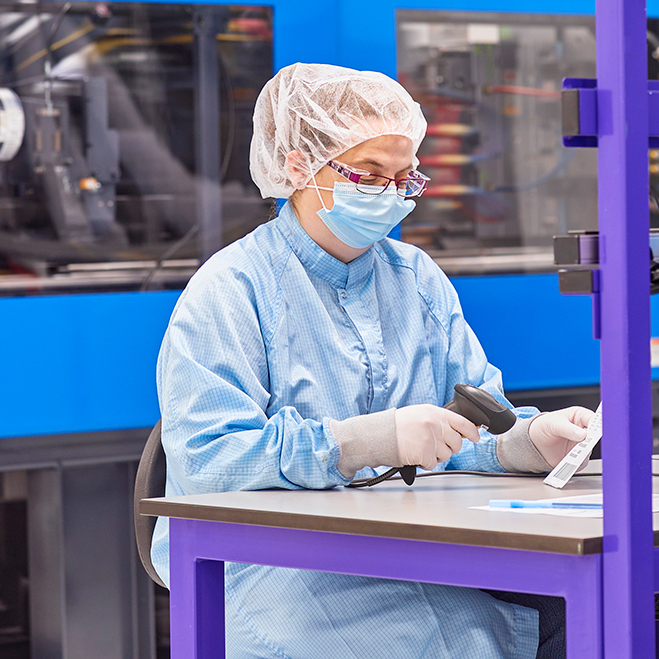RESULTS
Now that the new manufacturing work cell is producing commercial product, Comar’s effort in designing a new mold, increasing cavitation and integrating automation has delivered beyond the original. By increasing the mold to eight cavities, the clinical diagnostics company has seen a significant increase in output—an additional 1.3 million parts per year—with a decrease in unit costs. Improvements in the mold’s cooling efficiency have resulted in a 16% reduction in cycle time versus the previous mold design. Automation has reduced material handling to such an extent that labor costs due to material handling are down by 65%. Raw material costs have decreased by approximately 15%. By using reusable trays and pallets, all single-use packaging has been eliminated.
“Each company built, specified, and installed the automation at their respective facilities, but we collaborated heavily on the packaging configuration,” the senior engineering manager said. “We co-developed the layer packing and the palletizing and made the position requirements for the packaging specification together. We teamed up to make sure there would be a seamless transition and hand-off of product between the two companies, and we pulled it off with no major design issues or significant delays on either side. Looking at the value stream, Comar took a lot of waste out of the process, such as single-use packaging materials and product damaged in transit. Since human hands never touch the products, we have now cut the number of broken parts due to handling in half or better. There has also been a significant reduction in labor because both production and receiving facilities are fully automated at the pallet level.”







